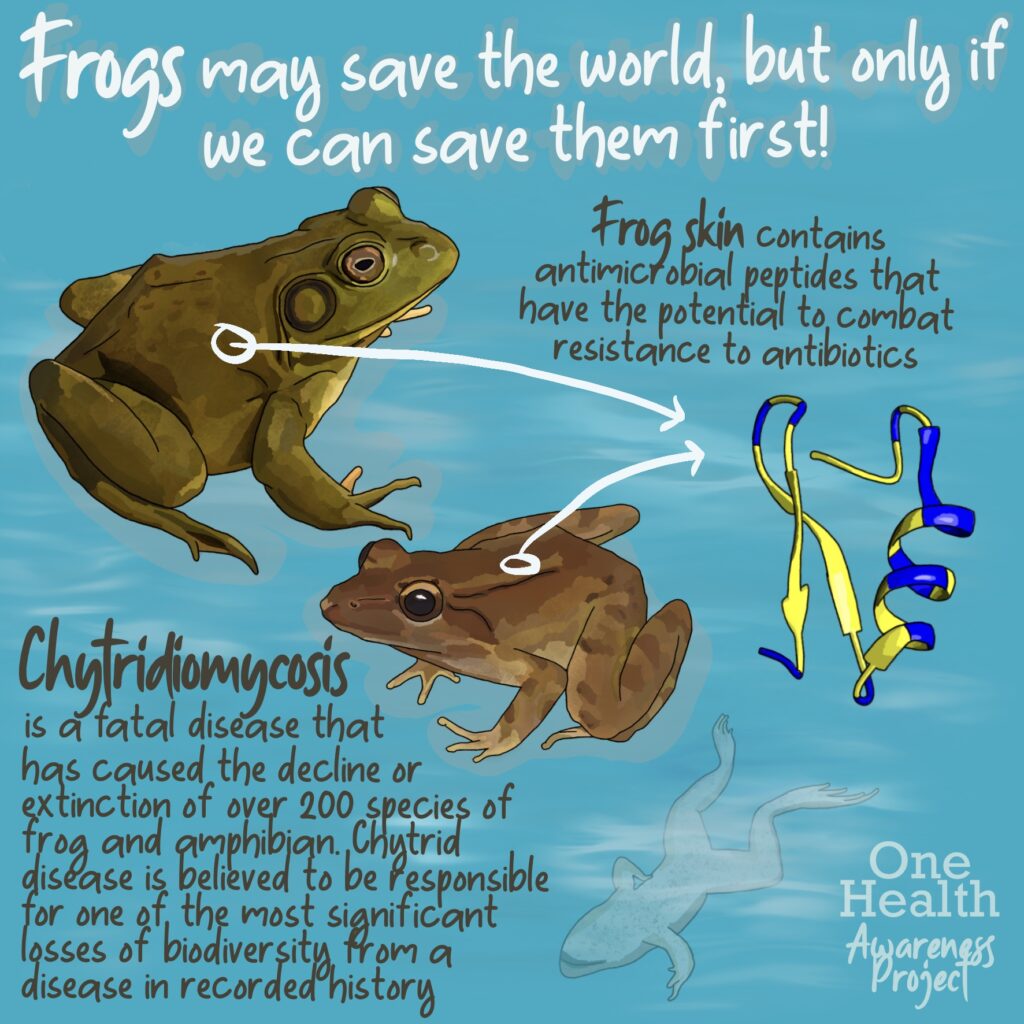Amphibians are currently the most threatened vertebrate class, with the disease chytridiomycosis contributing to their global declines, along with climate change and habitat destruction. Chytridiomycosis is a fatal skin disease caused by a fungal pathogen, which is currently having an unprecedented impact on a global scale, causing the decline or complete extinction of over 200 species. The disease may have originated in Africa in as early as 1938, and has since spread around the world, and is now responsible for one of the most significant losses of biodiversity from a disease in recorded history. Ironically, the loss of that same frog skin may have huge implications on the future health of humanity!

The struggle to combat antimicrobial resistance and maintain control of pathogenic bacteria has lead to increasing research on antimicrobial peptides (AMPs), which are small peptides that form part of the innate immune response shared by all classes of life. “Based on the intensive research and results obtained so far, AMPs will represent a novel alternative to antibiotics in the control of human pathogens in the near future.” Amphibian skin currently contributes more than 1000 unique AMPs, with many showing promising potency against antibiotic-resistant bacteria, protozoa, yeast and fungi. It is up to us to protect these creatures, for the future of their species, and possibly ours…(Ageitos et al. 2017)
